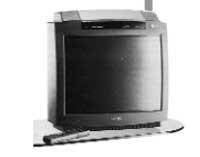Image playing on the digital door
2002/03/01 Mendiburu, Joana - Elhuyar Zientziaren Komunikazioa Iturria: Elhuyar aldizkaria
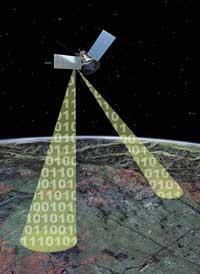
“Cinema is an invention without a future,” said Louis Lumière when he invented cinematography in 1895. But cinema has overcome all economic crises and, taking advantage of technological changes, has become an important artistic expression.
From a technical point of view, since the Lumière brothers made their first films, sound and colour are the main revolutions of cinema until recently. The year of sound was the year 1928 and around 1950, due to the slightest influx of audience to the cinemas by influence of television, was the turn of color. Now is the era of digitization and special effects.
Definition of digital image
Modeling is the first task to create a digital image. Modeling is the numerical representation of the elements, colors and movements that make up the image.
The easiest thing to break down the digital image is to divide it into cells. These cells are monocolored squares called pixels. The smaller the pixels, the more exactly the model is represented on the screen. Image resolution depends on the number of pixels in the length unit. Consequently, the image is considered to be a certain number of points. To model the movement, the events that compose it are replaced by simpler elements. The movement that presents reality, for example, is divided into stable images.
The most widely used tool for digitizing the natural image is the scanner. The scanner divides the image into lines analyzed below. Each line is broken down into dots, i.e. pixels. Then each pixel becomes a succession of symbols “0” and “1”.
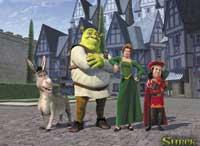
But instead of using the scanner, there are now also cameras or video cameras that offer digital images directly. Since these devices allow instant display of images, error correction and defective removal, it is no wonder that these are great selling products. 8% of the cameras sold in Europe are digital.
DVD videos (Digital Versatile Disc) also work as a scanner, dividing each line into pixels and translating each image into numbers. These videos have also had a better reception of expectations in the market. And the quality and possibility of watching movies in original version or from different angles, despite its high price, have made many people have fallen into the temptation to buy.
Cut, add, correct, copy and paste
If the possibilities offered by digital devices for the average user can be decisive, let's not say in film projects with budgets of millions of euros. By eliminating the cost of the film and considerably reducing the equipment thanks to a lower light requirement, the digital camera allows large projects with small budgets. In addition, as mentioned above, each scene can be recorded as many times as desired. Consequently, more and more filmmakers are betting on the digital camera.
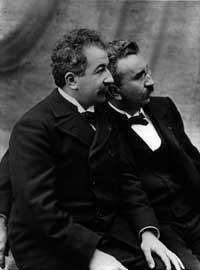
However, the advantages of digital devices are much more used in film production phases than in recording, i.e. in the generation and assembly of special effects. Since Steven Spielberg produced Jurassic Park in 1993, computer science has become a common cinematographic practice, among other things, multiplying characters to create images of the crowd, correct errors, eliminate unwanted elements... In addition, the blades and tail are left aside and the mounts are made as desired and faster than ever. As in texts, in films the images are copied and glued, allowing you to compare different montages and choose the one you like most.
From the artistic point of view, the possibility of manipulating seduces and at the same time intimidates by the foresight of the creation of digital art and by the possibility of easily concealing reality through the indiscriminate manipulation of images.
Cinemas are not yet available
All these advantages make digitization look good in the cinema, but the same does not happen in the cinema. The owners of the rooms are not willing to invest in the equipment that digitalization requires, although it would also entail many advantages.
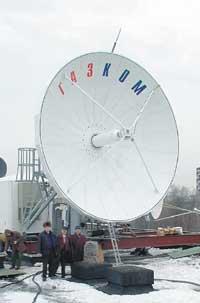
Today, before projecting the film, you have to paste the copy into a mill, take it to the cinema and finally install it on the projector coils. In addition, the projection booth must be acoustically isolated and two people must monitor the projection. From a commercial point of view, broadcast work should be done quickly, as the public does not like to wait too long. Another drawback of this projection system is that over time the films will spoil.
Digital cinema rooms have automatic digital projector. This projector composes the images combining red, green and blue and responds to digital projection signals with the thousandth second. Signals arrive by cable, fiber optic, hercian waves or satellite.
Digital cinema also has many advantages in terms of quality. On the one hand, because it offers better quality and, on the other, because over time films are not lost. Quality is determined in terms of resolution, brightness, tonality and absence of noise (stripes on film over time). The digital projection of high definition, frame of 4 million pixels, with 10,000 ANSI lumens, guarantees a billion colors and the same cleanliness of the first day, six months after its realization. In addition, the initial sound will arrive decoded to the cinemas, that is, each speaker will receive the sound information independently and therefore improves the sound quality.
What is digital television?
As for the future of television, several reports and studies have been published since 1996. The conclusion of all is that the step towards digitization is inevitable. There will be more programs, interactive services, better sound quality and image...
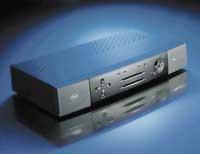
In addition, the digital system, thanks to compression software, occupies a space far below the analog system. The image is not transmitted by dots, but by uniform tone polygons and, in addition, only information that changes from one image to another is transmitted. Consequently, satellite transmission capacity increases 8 or 10 times.
Thanks to the space earned, each analog terrestrial channel includes between 4 and 7 digital channels, surpassing the current saturation. However, according to Julian Florez, director of VICOMTech, a company dedicated to digitization, “it will not necessarily mean the creation of more television channels. Because there are many TV channels and what we lack is time to see them.”
How is the transition from analog to digital? Currently, domestic television receivers and video magnetoscopes are not prepared to receive digital broadcasts. So, will we have to place new TV receivers and magnetoscopes?
Julian Florez must worry that it is not. “From summer onwards, the decos to be added to the current analogue television receivers will be available. These decoders will mainly be responsible for receiving the digital signal, ensuring the authorization of display and sending the signal to the television in an analog way. The expected price is 300-400 euros (60,000 pesetas or 2,500 pounds)”.
These decoders will also allow access to the Internet offering a wide variety of services that until now did not offer television. However, the design of the websites will have to be adapted, since television is seen further than the computer.
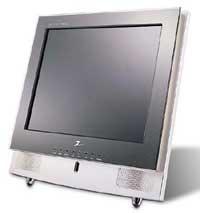
All these services will change TV access habits and create a more interactive television. For example, you can participate live in TV shows, watch the plays of football matches from the desired angle, watch the film in the original language, etc.
As for the antenna there will be no problems either, since analog and digital information will be sent by the same way. Therefore, it will not be necessary to change the direction of the antenna or the existing installation. In addition, during the transition, the same antenna can receive the corresponding chains to the analog and digital network. Therefore, in a first phase you can change the TV receiver, leaving the previous analog magnetoscope or vice versa. In blocks with many homes, some will want to move to digital and others will not, but that will not generate problems.
“2011. Until last year there will be analog system and digital system in the network and thereafter only the digital system”. The price of the new television sets will be around 1.070-1.370 euros.
As for the digitization of ETB, Lontxo Sainz, head of communication at EITB, told us that “by 2007 ETB will be fully digitized, with an investment of 42.67 million euros”.
Key dates of digital cinema
- 1980: Francis Ford Coppola performed a musical comedy Coup de coeur for effects and tricks through videos and electronic images.
- 1982: Tron by Steven Lisberg, first feature film obtained by image for synthesis.
- 1988: The special effects generation society Georges Lucas developed a computer system of merging images with each other. This system was used in films such as Willow (1988) by Ron Howard and Abyss (1989) and James Cameron's Terminator 2 (1991), among others.
- 1993: Steven Spielberg directed Jurassic Park based on computer created dinosaurs.
- 1995: Toy Story, first cartoon with synthetic images.
- 1999: Matrix came out.
- 2001: Shrek and Vidocg.
Digital television technology
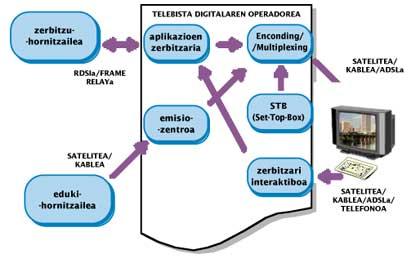
- Service Provider: Provides interactive services or content of interactive services. For example, it can be a bank that offers financial data to its customers from a secure door.
- Content provider: Provides television and radio content. Examples of this are Mediapark, SogeCable (Channel C, Channel +, Cinemania...), TimeWarner (CNN), etc. Send satellite or cable content to the operator's broadcast centre.
- Application server: Prepare the apps to code them before issuing them.
- Emission centre: Prepares the reception and encoding and dissemination of information from the content provider.
- Enconding / Multiplexing: Encode video, audio and interactive services information to turn it into an MPEG-2 format set. Encodes information thanks to conditional access to the platform. Finally, it combines all the information (video, audio and interactive services) (multiplex) to successively transmit MPEG sets.
- STB (Set-Top-Box): Deco that connects to the TV. Decode information and check user rights. In addition, it decodes the information in MPEG-2 format to convert it into analog signal and broadcast it to television.

Gai honi buruzko eduki gehiago
Elhuyarrek garatutako teknologia




